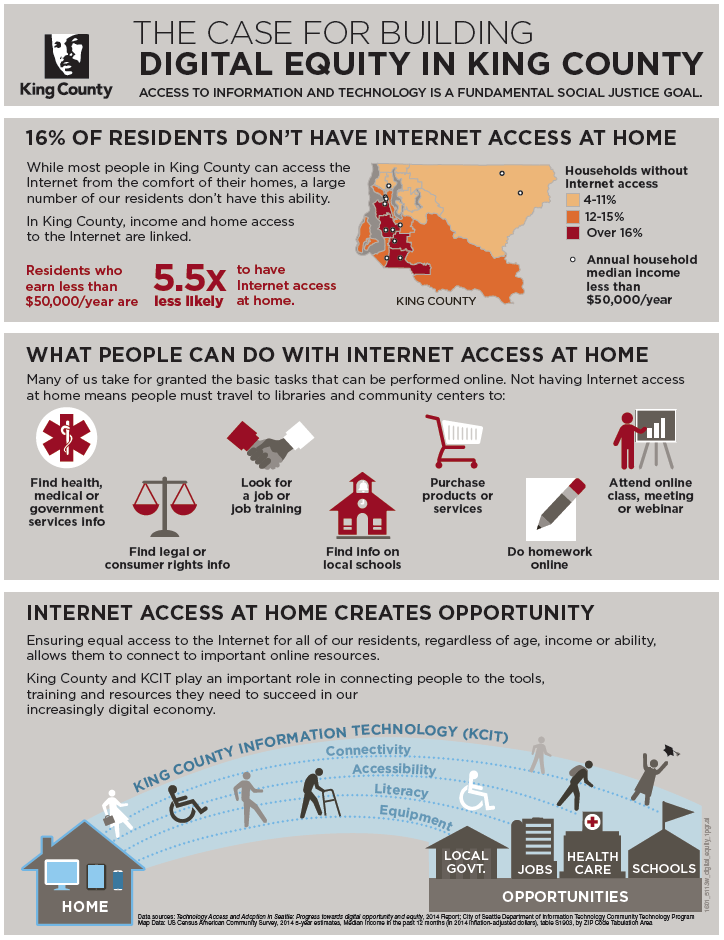Digital equity and inclusion
Ensuring all residents have the opportunity to thrive

The case for building digital equity
Washington state has the highest in-home broadband adoption rate in the country at 82% according to the National Telecommunications and Information Administration. In King County, the number is even higher at 86% of households.
But even here, with a booming economy and one of the nation's lowest unemployment rates, 14% of households do not have home access to the Internet—a resource so essential it is being called the "electricity of the 21st century." This significantly limits people's ability to search for and apply to jobs, find basic healthcare information, do homework or take college courses online, and access important government services like voter registration and public transit schedules.
Link between income and access
Many people take for granted the basic tasks that can be performed online. But not having Internet access at home means people must travel to libraries, community centers, or schools to:
- Find health information and access medical services.
- Look for a job or get job training.
- Find legal or consumer rights information.
- Purchase products or services.
- Find information on local schools.
- Complete homework or take college courses online.
- Attend online meetings or webinars.
This inequity places additional burdens on those community members who are least able to bear it. King County residents earning less than $50,000 per year are 5.5 times less likely to have Internet access at home.
In response to the digital equity issue, a number of jurisdictions nationally, including the City of Seattle , are adopting action plans aimed at ensuring disadvantaged residents and communities are not left behind.
What is King County doing?
Access to information and technology is a fundamental social justice goal. Ensuring equal opportunity and access to the Internet for all our residents—regardless of age, income, or ability—allows them to participate in our increasingly digital world.
King County has an interest in ensuring all our residents are able to access the resources they need to fulfill their potential. KCIT is working to enhance digital equity and inclusion across King County in the following ways:
- Accessible websites for blind, deaf, and hearing-impaired users.
- Open data made available to software developers and interested residents, helping our communities transparently share information about county services and trends.
- Digital communications portals like the Assessor's Parcel Viewer that help people learn about King County services and make decisions that are important to them.
- The Institutional Network (I-Net) provides affordable broadband Internet services for education, government, and nonprofit organizations.
- For a comprehensive look at King County's Equity and Social Justice Strategic Plan, visit kingcounty.gov/equity.
You may also view King County's digital equity efforts on Executive Constantine's performance website .

 Translate
Translate
